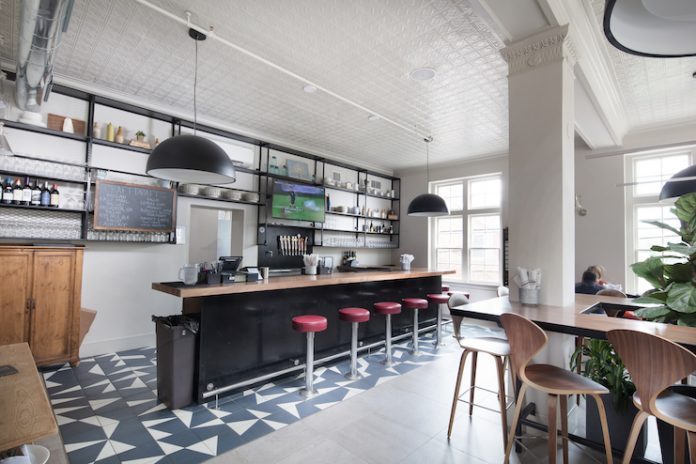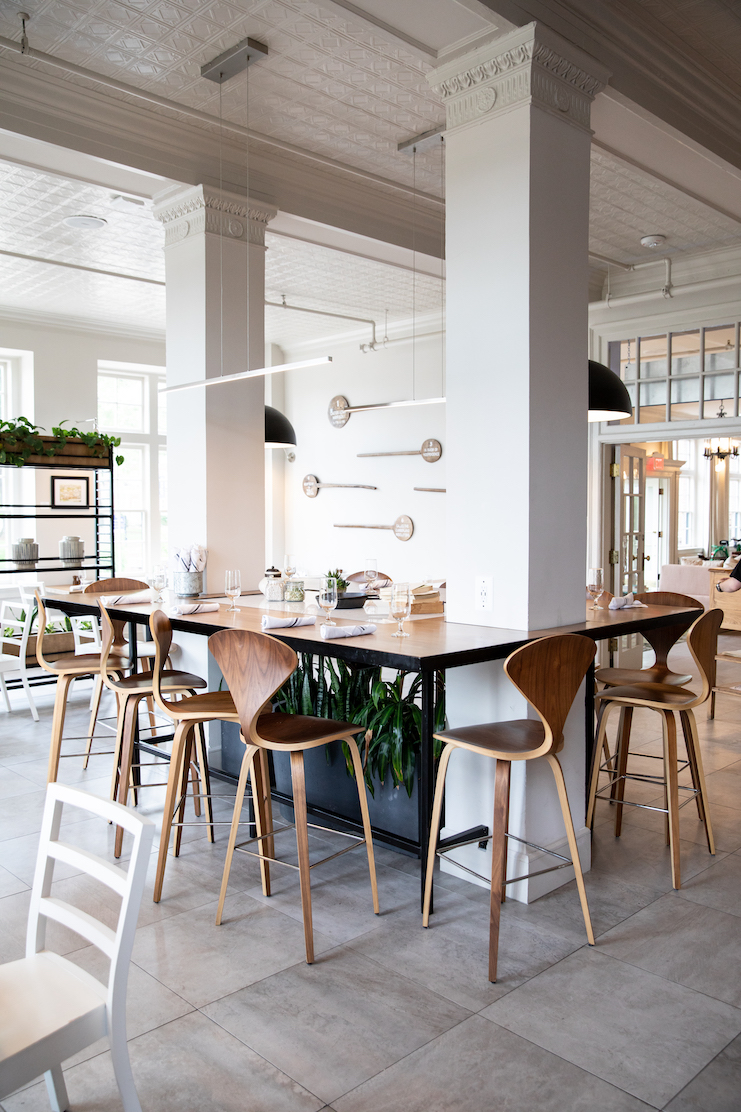
Last year, the number of people frequenting coworking spaces grew to 2.2 million, according to projections from the 2019 Global Coworking Survey, and the number of coworking venues ballooned along with the increased demand to 22,000—up from 8,900 in 2015. As hubs for both travelers and the surrounding community, hotels are positioned to attract remote workers with ground-floor cafes, carefully designed spaces, and fast, secure WiFi. Ginny Hightower is the lead designer behind Hotel Weyanoke, a luxury boutique hotel in Virginia, and the property’s onsite restaurant, Effingham’s—a coal-fired pizza café that is an extension of the lobby and a local spot for the community to work. LODGING caught up with Hightower to discuss what design elements and features turn a public space into a coworking-friendly environment to drive traffic in hotel properties.
What makes an area of hotel like a lobby a coworking-friendly space?
I think a space can be designated as “coworking” when the variety of seating arrangements and table heights can be dual purpose. For instance, if sofas or banquettes in the lobby have an adjacent continental height table (27 inches), then it is a perfect height to set up a laptop or write in a notebook or iPad. If gathering for a meeting, a sofa paired with chairs just to the right or the left instead of across a coffee table allow for guests to be close to one another and not feel so formal. Lastly, if guests have the ability to shift furniture around without too much effort, it can make gathering much easier.
“We have college students, professors, hotel guests, and the central business district crowd all gathered in the same place, therefore a variety of seating options and the ability to merge seating groups was a key design element.”
Can you describe Effingham’s coworking space?
Effingham’s, like many successful co-working environments, has a variety of seating options, which lends itself to accommodate a hybrid of functions. If a group wants to meet, the smaller table arrangements can be pulled together. If a single user wants to be in the middle of the action, he/she can sit at the column-wrapped communal table. Additionally, with the introduction of the tall planters, smaller spaces can be carved out of the large volume to make more intimate seating arrangements. Guests can function individually but be together in one space.

What was your design process for Effingham’s coworking space? Did you have a specific guest in mind that you were designing for?
With Effingham’s, the thought was to foster an environment that caters to the diverse Farmville community. We have college students, professors, hotel guests, and the central business district crowd all gathered in the same place, therefore a variety of seating options and the ability to merge seating groups was a key design element. Someone may pop in to eat alone, at the bar, or around the columns, yet still feel a part of a larger community. Or maybe a group wants to have a party and feel more secluded, so the planter racks can partition off the space. We needed to think about this space as a flexible environment with a color palette that could shift easily from daytime to nighttime.
What design elements are critical for a successful coworking space?
A few technological developments—besides WiFi compatibility—that I think all hotel developers have in mind when thinking of ways to accommodate hybrid workers is incorporating easily accessible USB and power outlets into tables and furniture. Task lighting is also key to the design process because having a well-lit space that is still comfortable helps productivity.
What aspects of a coworking space help to welcome both locals and travelers, and drive more traffic?
In an era where Airbnb is ever more popular, it is incredibly important for hotels to accommodate business and leisure travelers by incorporating coworking and communal spaces with amenities and flex spaces—all things that an AirBnB cannot always provide. In order to stay competitive, a diverse offering of amenities that support the coworking and communal spaces are needed.
For instance, The Hotel Weyanoke has Sassafras, a former coffee shop turned conference area, which is just a quick walk across the lobby from Effingham’s, so as guests move through the day they have a more intimate gathering space to accommodate their business needs.
Similar to this, Kimpton coins its concept the “Living Room,” where an abundance of seating groups facilitate interaction for both guests and non-guests. The Adolphus in Dallas has an exceptional bankers table in the lobby and a side room with incredible artwork that beckons guests and those within to work and play.











